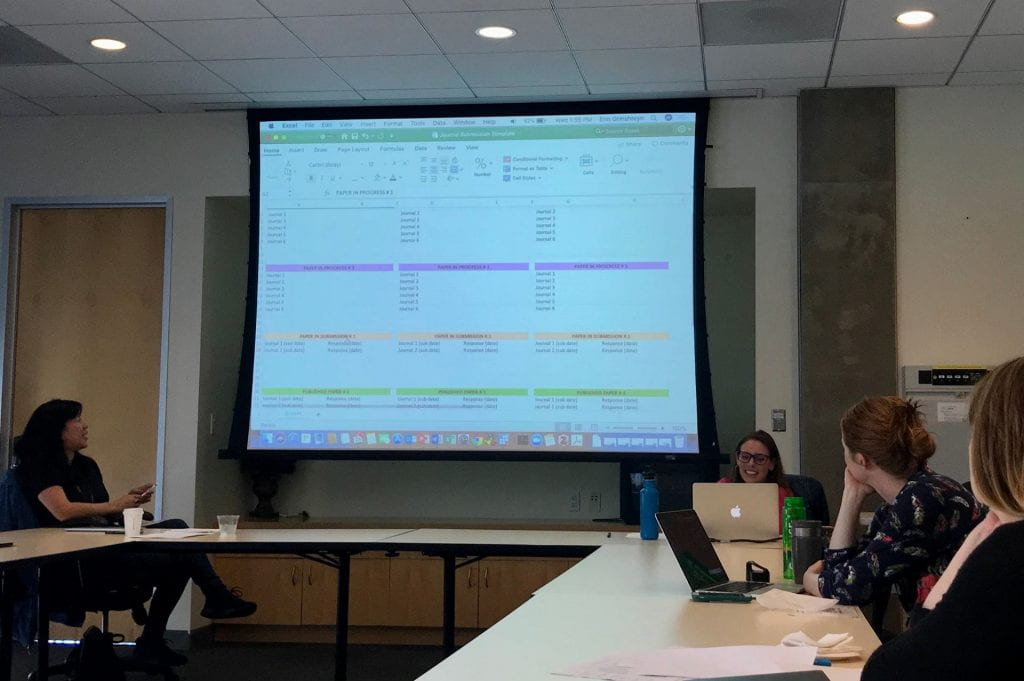Strategies for Turning your Teaching into Publication
Saera Khan, professor in the Department of Psychology, shares different approaches to identifying your pedagogical strategy and how to turn it into a publication.

Saera Khan, professor in the Department of Psychology
Professors take pride in their high caliber teaching, and when we innovate in our teaching, our primary goal is to create unique and original curricula or techniques to maximize our students’ understanding and critical analysis of the material. However, our efforts and engagement in teaching need not be limited to the students in our classroom. Academic journals and conferences devoted to sharing pedagogical innovations, strategies, challenges, and best practices (to name a few) exist so that others may benefit.
Identify your Strategy
To help you get started in thinking about how to turn your teaching into a publication, we created this non-exhaustive list of potential categories of types of articles you may write on your curricular innovations:
- Innovative teaching strategies, exercises, or assignments. My colleague, Violet Cheung created an original teaching exercise to help advanced research methods students learn about the statistical concepts of reliability and subjective data. Together, we refined her technique and tested the utility of this exercise over several semesters of this course. We presented our findings at the Annual Teaching of Psychology Conference.
- Curriculum design. Department members may collaborate to create learning goals and outcomes for specific courses as well as the overall program structure. Programs may take on a unique philosophy or pedagogical approach when student populations are considered in the design. In this case, a specific course may not be the focus per se, but rather how courses are designed and sequenced in relation to each other to create a comprehensive program.
- Case studies and storytelling in teaching. A narrative approach may teach a concept far more powerfully than a lecture. When we cover depression and suicide in my general psychology course, I present the true story of a young woman whose struggles with mental illness ends in tragedy. The story also allows us to explore the complexities in working with young adults suffering from severe depression as well as the right to privacy between college-aged students and their families.
- Narratives or reflections on teaching a particular course, population, etc. Teaching articles need not be geared towards teaching students. Your article can be a meta essay exploring broader themes or concepts about your challenges or joys in teaching. For example, one of my colleagues is writing an article on teaching a course as a queer woman of color.
- Adapting your course or teaching to a specific population. As our student populations diversify, our pedagogical strategies may need adaptation to reach all our students. Share how your teaching has grown more inclusive to students’ needs. Several of my colleagues are writing articles on adapting their teaching to support a high number of international students in their classes.
Please note that not all ideas fit neatly into one category exclusively and that your idea may be worthy even if it does not fit any of these categories!
Choose a Journal
After going through this exercise, your next step is to target a journal within your discipline and research the requirements. The ACRL Instruction Section Research and Scholarship Committee has a list to help find journals devoted to teaching in general and specific discipline areas.
Three Questions to Evaluate Your Probability for Success
There are three questions you need to ask yourself to evaluate your chances for success.
- Ask yourself: how will you evaluate success? In other words, what forms of persuasion can you use that will convince the reader that your ideas are worth trying?
- What previous articles have been published in the journals you are interested in? This will give you an idea of whether or not your article is a good fit for the journal or addresses an unmet gap in your field.
- Do I need to collect data to show evidence of my teaching approach, curricular innovation, or of student learning? For some of you, collecting pre and post intervention data is advisable and it may even be required for some teaching journals. For others, collecting students’ feedback specifically on your technique or exercise is sufficient.
![INSIDE CRASE [Backup Jan 2021]](http://usfblogs.usfca.edu/crase/files/2018/02/crase_logo-1nupzm8.png)



Leave a Reply